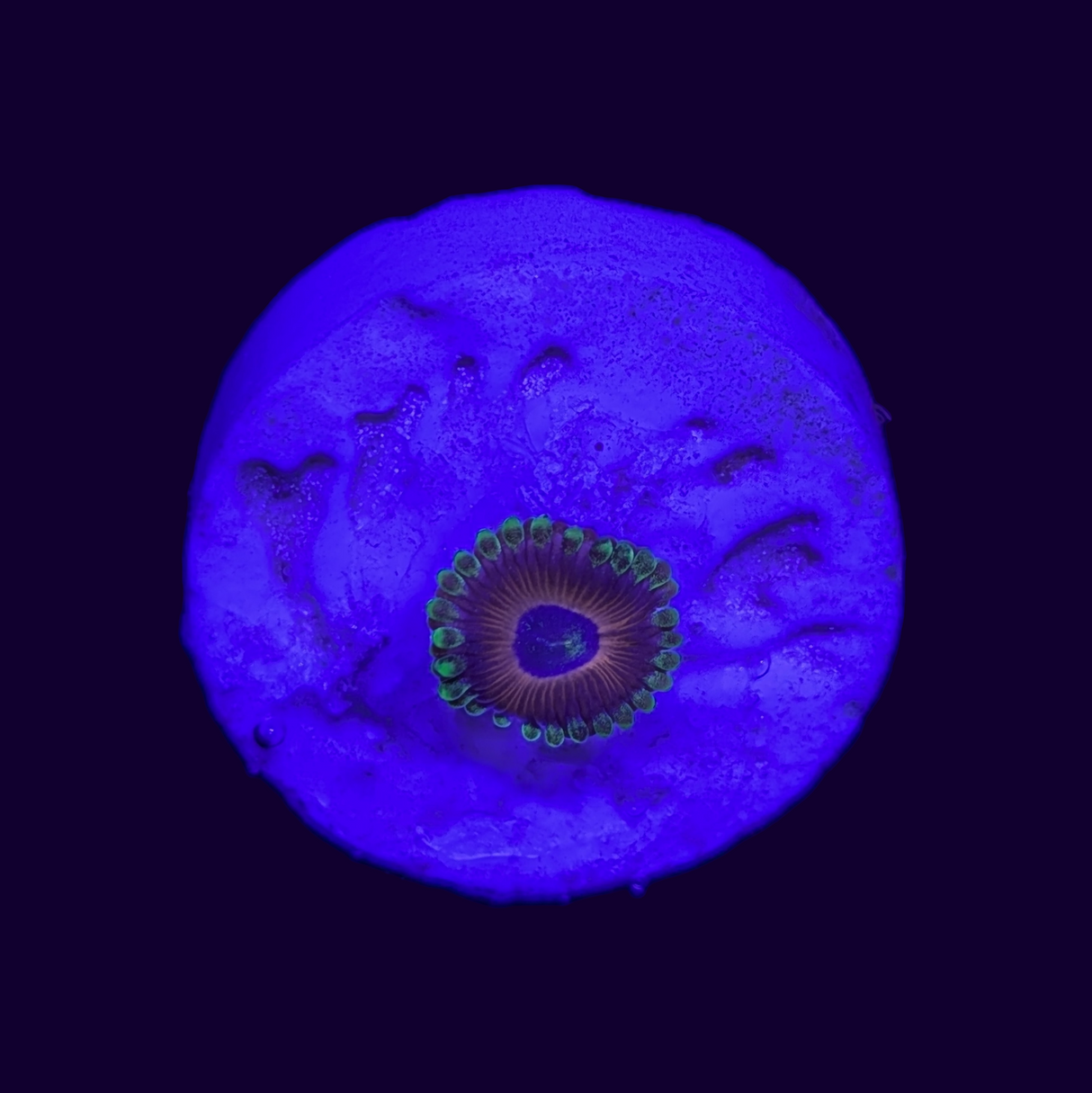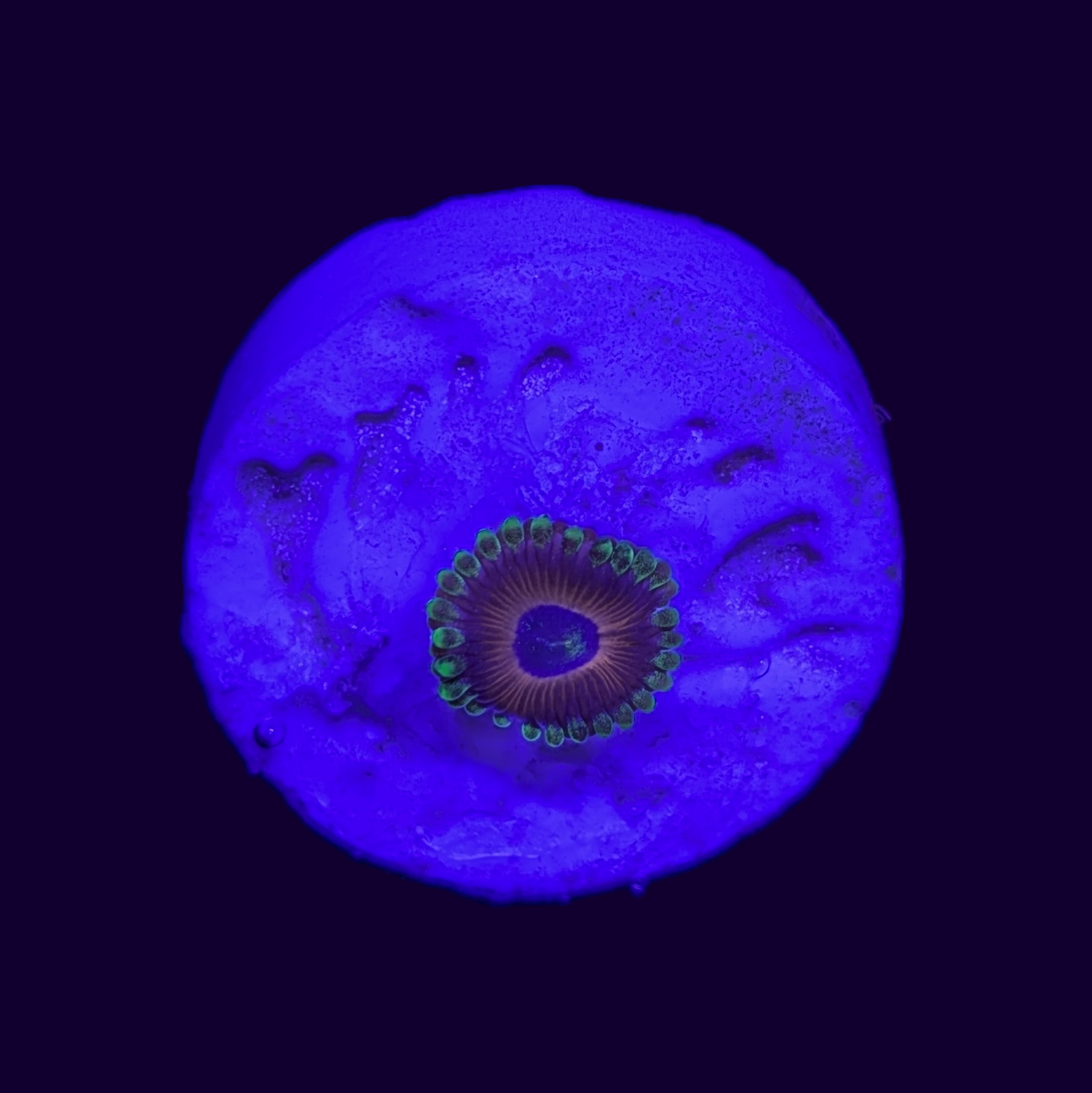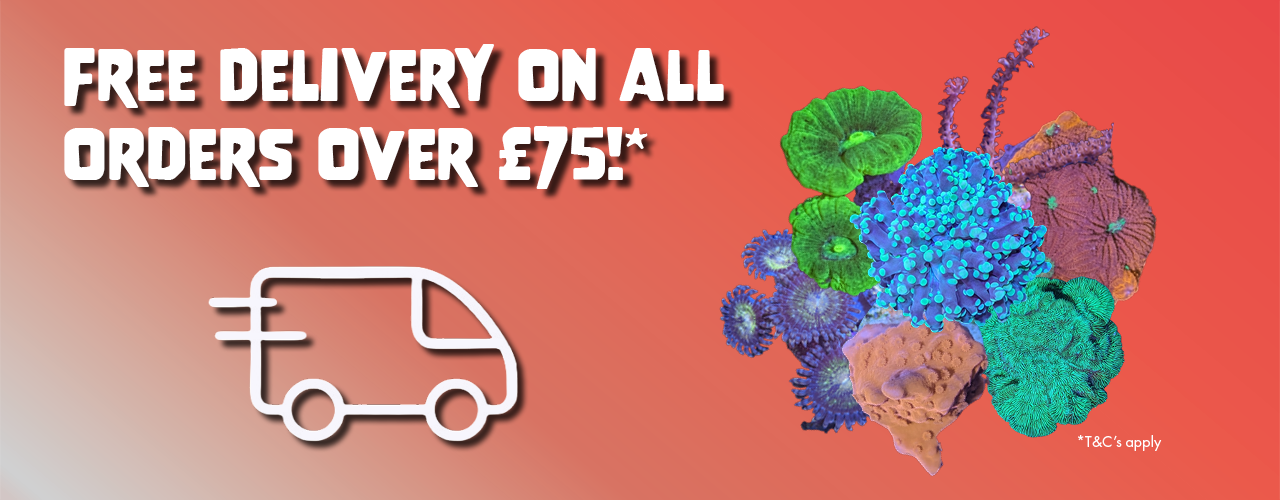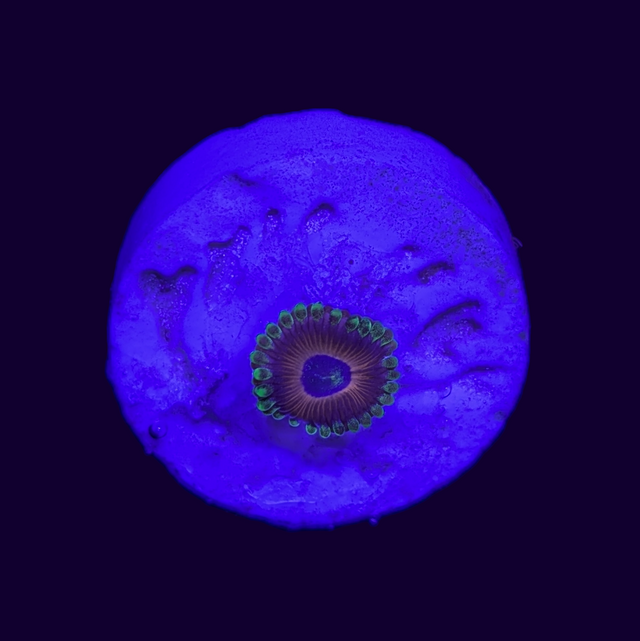Eagle Eye Zoa
Eagle Eye Zoa is backordered and will ship as soon as it is back in stock.
Couldn't load pickup availability
Description
Description
Type: Zoa
Name: Eagle Eye
Size: 1 Head Frag
Fixing: 100mm disc
NOTE: Zoas contain palytoxin so take care when handling these corals
Zoa Coral Care Guide
Introduction
Zoanthid corals, commonly referred to as "Zoas," are a favorite among reef aquarium enthusiasts. These vibrant and hardy corals are perfect for beginners and experienced aquarists alike, adding an explosion of color and diversity to any reef tank. Follow this care guide to ensure your Zoas thrive.
Tank Placement
- Lighting: Zoas prefer moderate to high lighting. LEDs are an excellent choice, providing adjustable intensity and spectrum to enhance their vivid colors. Avoid overly intense light to prevent bleaching.
- Water Flow: Moderate, indirect flow is ideal. Strong direct flow can irritate the polyps, causing them to close. Use adjustable pumps to achieve a balanced water movement.
Water Parameters
Maintaining stable water conditions is key to healthy Zoanthids:
- Temperature: 76°F - 82°F (24°C - 28°C)
- Salinity: 1.023 - 1.026 specific gravity
- pH: 8.1 - 8.4
- Alkalinity: 8-12 dKH
- Nitrate: <10 ppm
- Phosphate: <0.03 ppm
Regular testing ensures optimal conditions and prevents stress to your corals.
Feeding
Zoas are photosynthetic, deriving most of their energy from the light. However, supplemental feeding enhances growth and color. Feed them once or twice a week with:
- Coral foods: Reef Roids or similar fine particulate coral foods
- Amino acids: For improved growth and vibrancy
Turn off flow while feeding to allow food to settle on the polyps.
Growth & Propagation
Zoas grow by forming new polyps at their base. They can spread quickly under the right conditions, making them an excellent choice for filling in bare rock. Fragging Zoas is easy and can be done by carefully cutting a small section of the colony.
Pest & Disease Management
Keep your Zoas healthy by preventing common issues:
- Pests: Watch for nudibranchs, spiders, and flatworms. Dip new corals before adding them to your tank.
- Algae & Overgrowth: Clean excess algae or encroaching corals to avoid competition.
- Zoanthid Pox: Small white spots on polyps can be treated with reef-safe medications.
Additional Tips
- Compatibility: Zoas coexist well with most reef-safe fish and invertebrates. Avoid aggressive tank mates that may nip at them.
- Handling: Wear gloves when handling Zoas, as some species can release palytoxins, which are harmful if ingested or come into contact with cuts.
Why Choose Zoas?
Zoanthids are an excellent addition to any reef aquarium, offering a stunning array of colors, patterns, and growth forms. Whether you’re just starting your reef journey or looking to expand your collection, Zoas are sure to impress.
By following this care guide, your Zoa corals will flourish and become a vibrant focal point in your reef tank.
Payment & Security
Payment methods
Your payment information is processed securely. We do not store credit card details nor have access to your credit card information.






